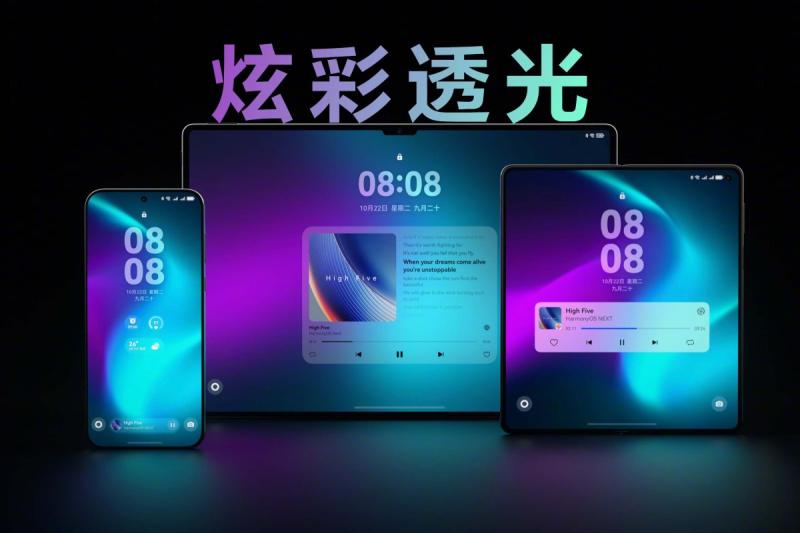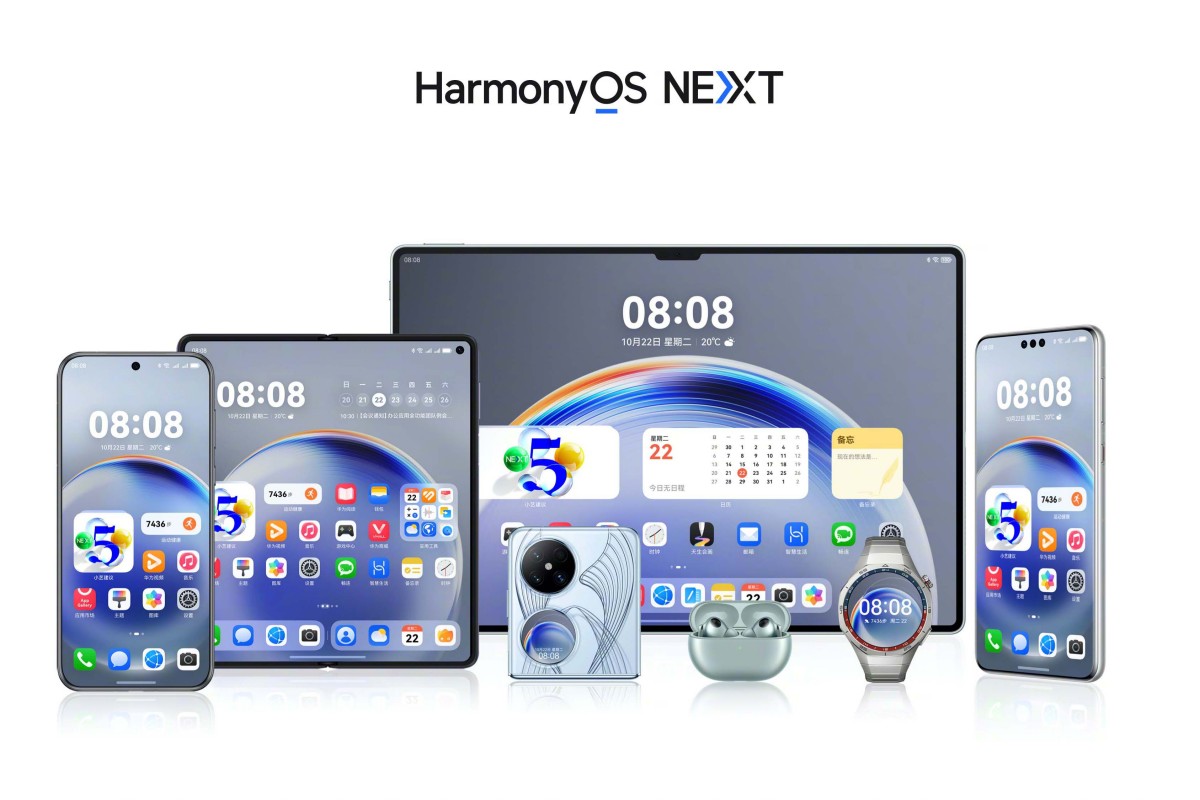We’ve found that there are a significant number of Huawei users in Zimbabwe. Huawei phones haven’t had the Google Play Store or the essential Google Play Services for years.
So, either Zimbabweans really love their Huaweis and are buying phones without Google services, or most of these people got their Huawei phones a while ago and have simply held on to them. I think it’s the latter.
When politics got Huawei banned from using Google services, they had to go back to the drawing board to build an alternative.
While Huawei couldn’t use Google services, Android is an open-source operating system, so they were free to use it. And that’s exactly what they did.
The operating system they developed, HarmonyOS, was built on the Android Open Source Project (AOSP). This meant they could run Android apps (in addition to HarmonyOS-native apps) and maintain some similarities to Android in terms of functionality.
Essentially, HarmonyOS was just a modified version of Android.
HarmonyOS Next

Huawei is now fully moving away from Android.
HarmonyOS Next is an entirely new operating system built from scratch by Huawei, completely separate from Android and without any of its code.
HarmonyOS Next only supports native applications developed specifically for its platform, moving away from Android APK compatibility.
Just as Android is open-source, Huawei has its own open-source foundation called OpenHarmony, which serves as the base for HarmonyOS Next.
What HarmonyOS Next is all about
HarmonyOS Next is designed to work seamlessly across various devices, including smartphones, tablets, wearables, IoT devices, and even cars.
Huawei wants these devices to integrate as closely as Apple devices do. For instance, when using a Huawei phone and tablet, you can start reading an article on your phone and pick up right where you left off on your tablet.
This interoperability involves:
- Content: Pictures, videos, documents, and even web pages move effortlessly between devices.
- Settings: Changes you make on one device, like your wallpaper or notification preferences, automatically apply to the others.
- Notifications: See your phone’s messages and alerts on your tablet, and vice versa.
You would expect nothing less. Imagine this with your car and other IoT devices and you have an idea of Huawei’s ambitions.
Then there is performance. Early reports suggest HarmonyOS Next offers a smoother and more responsive user experience compared to previous versions.
Technical details
HarmonyOS Next has a fresh new look. Users can customize the lock screen and home screen more than before, and the control center has been redesigned. Apps launch faster, animations are smoother, and devices should feel more responsive overall.
It’s also smarter thanks to new AI features, we’re talking system-level AI based on the Pangu large language model.
Huawei says HarmonyOS Next makes devices 30% more responsive and uses 20% less power.
Sharing files between your Huawei devices should be faster with the new Huawei Share 2.0. They give an example of sending a 1.2GB file in about 8 seconds.
Finally, HarmonyOS Next should be more secure with the new Star Shield architecture.
Will this succeed?
The graveyard of failed operating systems that tried to compete with the Android-iOS duopoly is extensive. Some predated these two giants, only to be overtaken. R.I.P to Blackberry OS, Symbian, Windows Mobile, Tizen, and others.
Some of these still exist but have gone niche. Tizen failed as a smartphone OS, but it has found a place on Samsung TVs due to its cross-platform potential, similar to what HarmonyOS aims to achieve.
So, HarmonyOS faces an uphill battle to carve out a slice in the mobile OS space.
However, I think HarmonyOS has a better chance of success than past attempts. Huawei is a major player in China, even after the political challenges.
As of September 2024, Apple held the largest market share in China at 21.91%, with Huawei close behind at 19.06%. China is a huge market, and HarmonyOS already has a substantial user base there.
Globally, over a billion devices are already running the old HarmonyOS.
In the past, HarmonyOS benefited from Android compatibility, allowing it to run apps built for Android. Now that HarmonyOS Next requires native apps (.HAP files), Huawei faces a new challenge.
Other OS attempts failed to convince developers to build apps for them, and Huawei will face the same hurdle. Developers usually only join once there’s a substantial user base. While Huawei is performing well in China, it struggles internationally.
In China, where Google services are banned, success is more achievable. But for international growth, HarmonyOS will face difficulty as users in most regions rely on Google services. Long-term, HarmonyOS needs global success to avoid failure.
Global expansion will be tough due to ongoing restrictions in Western markets, which means HarmonyOS may only gain traction in regions more supportive of Chinese products, like parts of Africa and Asia.
This creates a “chicken and egg” problem: users won’t adopt the OS without apps, and developers won’t build apps without a user base.
Huawei Consumer Business Group Chairman Richard Yu reported that 15,000 apps and services are part of the HarmonyOS Next ecosystem, with more on the way.
That’s the challenge: 15,000 apps is minuscule compared to the over 2.1 million available in the Play Store and App Store.
Only time will tell if Huawei can solve this chicken and egg problem. If not, HarmonyOS, as promising as it is, will be toast.


Comments
10 responses
It will always remain IOS VS ANDROID,, harmony os thats 👎👎👎👎
Fact
Interesting actually, as for me i believe that Harmony OS will not fail. Lets look at the needs of a general person as far as apps are concerned, gone are the days when we needed share it or an app for flashlight something like that now app development is streamlined. Companies that offer services and products are creating their own apps and offer support for them, i just hope they allow sideloading for their OS, if you have your whatsaap and your socials apps you are fine if you want a specific service you just go to the company website and get ot there. Moreover the days are elapsed where we use apps because they run Javascript engine locally making them load faster and all, internet has become better and servers have become more efficient through virtualisation thanks to the cloud for that, that’s why the current battle is which browser is better and faster which browser is good with caching and which one is more secure. The major taks Huawei has is marketing they have to channel resources for marketing. Huawei has the advantage here as a major producer of Chinese mobile phones they can get on board with companies like One plus xiomi Oppo Infinix etc for lets say their Chinese market remember China has their own portfolio of native apps that are allowed there hence it becomes easy adaptability wise. There is room for growth with harmony OS i hope they succeed we need more choices in the market
You’re right 💯. Huawei used to be my favorite bro. I hope it dominate the market again.
I think its unfair to claim “Symbian” is a failed OS. It was killed by Microsoft, and not necessarily due to competition to Android/iOS. “In 2011, Microsoft acquired Nokia’s mobile division, which led to a shift in focus towards Windows Phone. This reduced the resources and support available for Symbian OS. As a result of the acquisition, Nokia announced that it would be ending development of Symbian OS. This meant that there would be no further updates or support for the operating system.” (Google search)
IMHO I think it remains one of the most successfully OS
I hope they will make a roll out of the OS to every Huawei, even older ones so everyone can have a feel of it.
I also think they should have allowed android apps to run on the Harmony Next and/or given users a choice of selection.
Whilst it remains to be seen if the OS makes it, chances are high it might.
And if China decides to retaliate by banning Android and iOS, then Harmony Next will easily sail through, given that China is the biggest market of all those OSs.
I like Huawei
got the Huawei gt3 and then the gt4 both on harmony os…i I love them…but if they can’t talk to my android it’s a deal breaker
If we can install the os into older phones with android then this harmony os will be a winner
We consume Western content more than we do Chinese ones. Harmony OS may be restricted access to your favorite services in the west, for simply being Harmony OS, lets say if its branded as a malicious tool capable of being used by China to compromise the US. Imagine it being treated the same way Tik Tok is being treated right now in the US. Far fetched thought with a huge possibility of happening. So essentially a phone banned in the States or Europe. Just in the same way Huawei’s 5G technology was iced by the western world. Still far fetched notion? Then there is the pricing issue. If there is a Huawei fone selling at a $1 and an android fone for the same amount, wouldnt it make sense to just buy the android. Why? Is there a guarantee the apps we used to are or will always be on the platform. If google services was banned whats stopping Trump from directing US based app developers to stay off the platform.